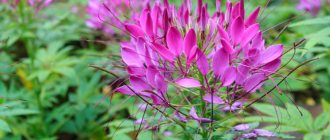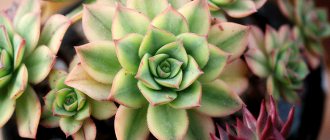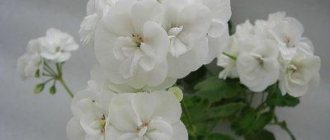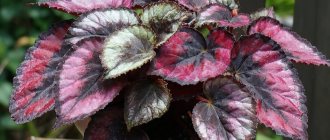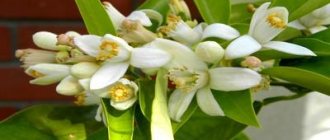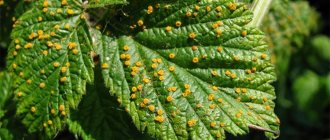Clarkia is an excellent representative of a garden and ornamental annual plant, combining a wide range of colors, compactness, and an abundance of green mass. Most gardeners love Clarkia because of its elegant appearance, spectacular numerous flowers, long and lush flowering, good and fast growth. The main advantage is that growing Clarkia elegans, including from seeds, does not cause any trouble. The plant owes its name to the English captain William Clark, who brought the flower to Europe from California.
Features of Clarkia graceful
The culture belongs to the annual flower stalks of the fireweed family. Almost all of its varieties bloom very beautifully and for a long time, pleasing the eye with bright colors.
The height of the bush does not exceed half a meter. The graceful flowers of Clarkia unguiculata are small in size and arranged compactly. The stems are straight and branched, with a hairy edge.
Flowering plant
The leaves are painted bright green with a specific bluish coating. They have an elongated, slightly oval shape, located alternately on the stem. A flower with a diameter of 3-5 cm can be simple or double. Inflorescences with a raceme or spike-like connection come in different shades. Single peduncles are extremely rare. The seeds, enclosed in an elongated capsule, open after full ripening.
Important! The main advantage of the flower is its high resistance to cold. Clarkia requires a lot of light for normal flowering, so when growing it at home, choose windows facing the sunny side.
Terry clarkia flowers seem to peek out from the axils of the upper leaves. From a distance, the flower resembles a miniature hollyhock. Flower growers prefer to grow the plant outdoors, on window sills and balconies. Cut bouquets are used to decorate rooms.
In the wild, clarkia is found in Chile and the western United States. More than 30 plant species are known, but only three are used for ornamental cultivation, from which breeders are developing new varieties. The clarkia flower was brought to Europe from the USA. It got its name from William Clark, who brought it to the Old World in the 19th century.
Harvesting seeds, preparing for winter
In the spring, many new shoots appear in a flowerbed with clarkia - these are seeds from unharvested buds, so thinning is necessary to give the plantings a decorative appearance. If it is necessary to grow a flower in a new place, then seed material is collected in the fall and pre-winter or spring sowing is carried out.
After flowering, the largest buds are left and tied with cloth (gauze). The brown color of the box indicates readiness for cutting. The cut buds are kept in a dry room for several days, then the seeds are poured onto paper and dried. Store in a paper bag.
When flowering ends, the plant is pulled out and the soil is dug up, starting preparations for spring (autumn) planting. Plant residues should be burned or removed from the site to protect the soil from infection and pests.
Popular varieties
Carnivorous plants - insectivorous flowers at home
The Clarkia graceful flower has many varieties of different colors. The most popular are:
- Albatross. The variety is annual. The height of the stem reaches 75 cm. The shoots are very branched, with white double inflorescences at the ends.
- Purpurkönig. The height of the plant is about 80-90 cm. It blooms in May-June. Rich red, double flowers reach 4 cm in diameter.
- Salmon perfection. One of the tallest shrubs of this species. Its height reaches 1 m. The flowers are pale pink in color. Their diameter does not exceed 3.5 cm.
- Sun. The bush grows in height up to 65–70 cm. The inflorescences of the plant are single, pale salmon in color.
- Orange The bush grows up to 55–65 cm in height. The bright orange flowers attract the attention of others.
- Clarkia Sakura. It has compact double inflorescences of white color with a pinkish tint. The height of the bush reaches 120 cm. During flowering, from afar it seems that the Japanese cherry tree of the same name is blooming.
What other types of clarkia are cultivated by gardeners?
What a violet looks like - description of the plant
You can also see other representatives of this family in flower beds and gardens. Among them are the following types:
- Clarkia terry. The variety is distinguished by a low stem (up to 65 cm) and huge inflorescences by the standards of the species. They reach 6 cm in diameter. Flowers are collected in a spike.
- Fantasy. The bush reaches 75 cm. The plant is distinguished by lush flowering and different colors of inflorescences.
- Pretty. A very low plant, the height of which barely reaches 30 cm. The inflorescences of this clarkia are double and simple. Flowering begins at the end of May and continues until frost.
- Brevery. This is a fairly new variety. It is resistant to light frosts and reproduces without seedlings. Compact bush with pink flowers.
Site selection
In its natural environment, the crop feels comfortable both in sunny areas and in the partial shade of neighboring plants. It should be noted that in the shade, clarkia also grows and develops, but the growth of foliage occurs at the expense of flowering - not so many flowers are formed and the size of the buds is smaller.
The soil in the flowerbed should be loose and light to ensure maximum supply of nutrients to the roots. In heavy soil, moisture is retained longer, which promotes the development of fungal infections and affects the condition of the root system. You can lighten the soil by adding sand or peat. If the groundwater is located high, it is recommended to make the flower bed higher and be sure to add drainage.
The flower grows best in slightly acidic, not very greasy soils. In areas with excess nutrients, roots do not develop well and the plant dies. You can create a suitable level of acidity with the help of sulfur by adding 60 g to each square of the area when preparing the flower bed.
On a note! The soil will be acidified by adding 1.5 kg of peat per 1 m², watering with a solution of citric (oxalic) acid at the rate of 1.5 tbsp. l. on a bucket of water. The addition of lime powder will reduce the acidity level.
Clarkia: growing from seeds, when to plant seedlings
Gypsophila perennial: creeping, graceful
The plant needs light soil with a high content of minerals. Seeds are sown from mid-March to early April. The procedure should be as follows:
- Prepare containers of shallow depth and loose, fertile soil. The seed of the plant is small, so it should not be buried.
- In order for the seeds to germinate faster, they need to be soaked in water or growth-stimulating compounds in advance.
- Before planting, the seeds are mixed with sand, and the resulting mass is distributed over the surface of the soil.
- The earth is lightly compacted and, after lightly spraying with water, covered with film.
- The container is placed on a well-lit windowsill, but not in direct sunlight.
First shoots
The first shoots will appear on the surface in one and a half to two weeks. Knowing what clarkia seedlings look like, it is not difficult to understand when they will hatch. For normal growth indoors, you need to maintain a temperature of about 20 °C. You also need to monitor the soil moisture and moisten it when it dries out.
Clarkia seedlings are picked after the second leaf appears. This is important because the plant does not respond well to transplantation. For planting, use separate peat cups, which can simply be buried in the soil. The distance between plants should be at least 20-35 cm.
Important! Before planting in open ground, clarkia sprouts are hardened off by taking them out into the open air for a couple of hours.
Clarkia is planted in the garden at the end of May. It is quite resistant to low temperatures and can survive light frosts.
Picking plants
Sowing
Before sowing calla lilies, you need to germinate the seeds. To do this, they are placed in warm water for 6 hours. Adding a growth stimulator will not be superfluous. After this, the planting material is placed in a damp towel or gauze, covered with it and sent into a warm place for about a week. When the towel begins to dry out, you will need to re-moisten it.
Seeds are planted as follows. Small holes are made in the previously prepared soil, about 3 centimeters deep. The soil is watered, seeds are placed in it and carefully sprinkled on top. If clay pots are used, the number of seeds in each should be from 3 to 5, this will guarantee the emergence of seedlings.
Features of planting without seedlings in open ground
The culture requires fertile and light soil. On heavy soil, clarkia, which is not too difficult to plant and care for, will grow poorly.
Before planting the seeds, the bed is fertilized with peat or a mixture of sand and humus. You can grow seedlings in open ground according to the same scheme as at home. The main thing is to correctly distribute the seeds throughout the bed and open them after the first shoots appear.
Note! If clarkia graceful, which begins growing in the fall, germinates before the onset of cold weather, there is no need to worry. They will not freeze out under the snow, but in the spring they will need to be thinned out.
The advantage of such cultivation is that young seedlings are not injured during replanting and therefore begin to bloom several weeks earlier.
Preventing shoots from freezing
Failure to follow the recommendations on when to plant clarkia in an outdoor garden bed will most likely lead to the freezing and death of still rather weak plants. Most often, such crops are planned for the first weeks of May.
However, if the climatic conditions of a particular geographic latitude allow one to count on a consistently warm spring, then seed planting can be planned for the end of April.
In some cases, gardeners, reproducing the natural conditions of the growing season, carry out sowing work in the autumn, which allows them to obtain seedlings in early spring.
Features of garden care
The main condition for the normal development and lush flowering of clarkia is regular watering. Usually it is enough to do this twice a week, but on hot days the flower needs to be sprayed more often.
Spraying plants
When setting buds, fertilizing with a complex of minerals is applied to the soil. In summer, the process is repeated every two weeks until flowering stops.
When and how does clarkia bloom?
The flowering period, depending on the species, can last from June until frost. The flower shape can be spicate or racemose. Flowers can be double or simple.
Care after flowering
Caring for the plant after flowering ends involves removing all fading inflorescences so that the bush blooms more luxuriantly and new ovaries appear. It is better to tie tall stems so that they do not break.
Clarkia can reproduce by self-sowing. Home cultivation will become easier if, during flowering, you select the strongest peduncles and monitor the formation of a seed pod on them. To prevent the seeds from falling to the ground when opening, the fruit is wrapped in gauze or bandage and fixed on the stem.
Additional Information. When the boxes turn dark brown, they are cut and dried. The seeds are poured into a separate envelope, signed with the year of collection.
Clarkia tolerates winter quite well, especially if the seeds are planted in the ground in the fall. You can save sprouts from severe frosts by mulching. If the plant is going to be moved indoors, the above-ground part of the bush is cut off and the roots are dug up. This prevents the development of harmful fungal spores in the soil.
Plant pruning
Since clarkia graceful is an annual plant, there are no special requirements for its pruning. Despite the fact that the crop looks like a lush shrub, there is no need to shorten or remove shoots (Figure 6).
Note: The only activity that can be carried out in the garden bed is the removal of wilted inflorescences. They are simply torn off so that dry petals do not spoil the appearance of the plant.
Usually, a few dry inflorescences are still left on the stem in order to collect the seeds in the fall. However, keep in mind that this ornamental crop reproduces very well by self-sowing. Therefore, if you do not want to spoil the appearance of the flowerbed, wrap several inflorescences in gauze. This will prevent the seeds from spilling onto the ground and you can collect them.
Figure 6. Pruning involves removing faded inflorescences
As a rule, planting material reaches maturity a month after flowering has completed. With the onset of autumn, after collecting the seeds, the stems are cut off and the area is dug up so that no roots remain in the soil.
Possible problems in growing
The culture is resistant to pest attacks and diseases. However, errors in plant care can provoke the development of fungal and viral diseases.
Plant diseases
If brown spots appear on the leaves, the clarkia is affected by a fungus, and most likely this is a consequence of an excess of moisture or nitrogen fertilizers. To eliminate the problem, fungicides are used, for example, Bordeaux mixture. Her plant is sprayed twice a day.
Important! If affected by pathogenic insects (mealybugs or aphids), the crop must be treated with insecticides.
Midges that appear due to waterlogging lay larvae in the soil, which eat the roots of plants. The only way to save a flower is by transplanting it into another container. To prevent their appearance, the soil in the pot must be loosened periodically. Sulfur is also used in the fight against midges. A few heads of matches stuck into the ground will help rid the clarkia of pests. A weak solution of potassium permanganate is also used for this.
The Californian beauty Clarkia graceful can decorate an area for a long time with its abundant flowering. To get this result, you just need to follow the rules of growing the crop.
Diseases and pests, control methods
Clarkia is characterized by stable immunity. Therefore, it is rarely exposed to diseases and pest invasions. But sometimes it can be affected by fungal infections. They are usually associated with excess moisture and frequent watering. First, the roots are damaged, and the entire plant gradually withers. In such cases, it is almost impossible to save the flower. It is recommended to simply remove damaged specimens and adjust the watering system.
To prevent infection of other plants, it is recommended to treat them with the following means:
- Oksikhom,
- Bordeaux mixture,
- copper sulfate.
Pests that damage clarkia:
- mealybug;
- garden flea beetle.
To combat parasites, spraying with fungicides is used:
- Karbofos;
- Fitoverm;
- Confidor.
